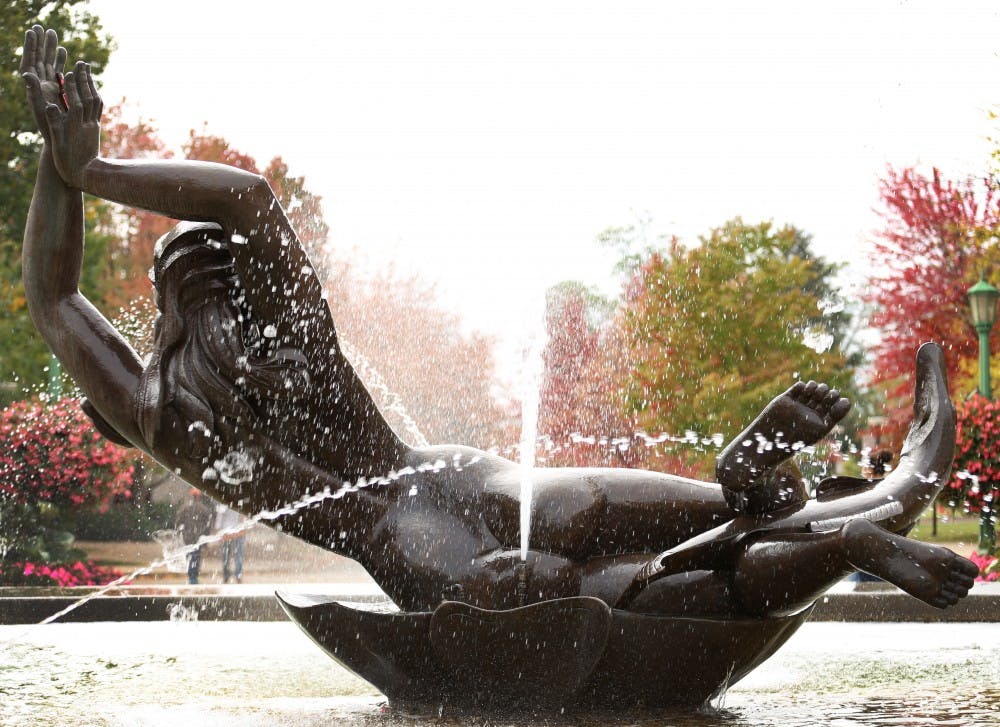The public art displays at IU are a defining feature of the campus’ character that have a far-reaching history.
Some art works have become beloved IU landmarks, while others are hardly known at all. Some have been the subject of controversy for being too daring. Others have been the subject of local myth, lore and pranks. Both popular and obscure, the statues of IU all carry a story about campus.
Showalter Fountain by Robert Laurent
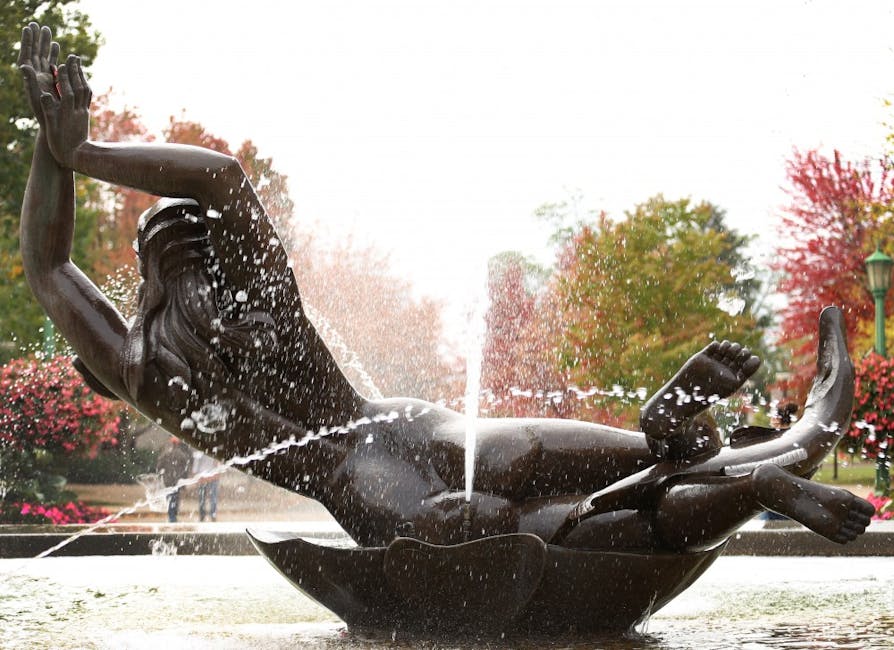
"The Birth of Venus" at the Showalter Fountain is the centerpiece of the Fine Arts Square and one of IU’s best-known public art works. It is also the most abused and controversial, said Sherry Rouse, public art curator for IU.
“People don’t like change,” Rouse said, noting it is not unusual for some people to get offended by modern design or nudity.
"The Birth of Venus," designed by IU fine arts professor Robert Laurent, depicts the Roman goddess Venus rising from the waves on a shell surrounded by five fish (or dolphins), “an allegory for the pursuit of truth and beauty,” according to an IDS article from May 17, 1961. Its origins begin in the 1950s, when then-IU President Herman B Wells first commissioned it and traveled to Italy where the bronze was cast in 1958.
Made possible by a gift from Grace Showalter, "The Birth of Venus" was dedicated Oct. 22, 1961.
While the design was met with criticism by some students for its lack of "modesty” and because the eye-browed fish are “ugly,” it soon became a popular hangout and part of campus culture. Tradition has it that graduating seniors jump into the fountain every May.
Additionally, campus lore dictates that whenever a virgin graduates, one of the dolphins will swim away, and whenever a virgin walks by, Venus will come to life and the dolphins will swim away. Rouse said that such stories have become popularized through campus tours.
The statue has also been at the center of numerous pranks and vandalism.
All five fish disappeared when IU won the NCAA basketball championship in 1987, according to a report by the Indianapolis News. They were soon recovered, according to an IDS report. A fish had also been taken when IU won the NCAA championship in 1976.
In 1962, the IDS reported the school suspended students swimming in the fountain. Then in 1966, students poured detergent into the fountain, giving the statue of Venus a bubble bath.
Pranksters have made the fish spout green-dyed water and have bestowed Venus with a hat or a bikini. Every few years someone attempts to steal one of the fish or rams their vehicle into the statue.
Herman B Wells statue by Harold Langland
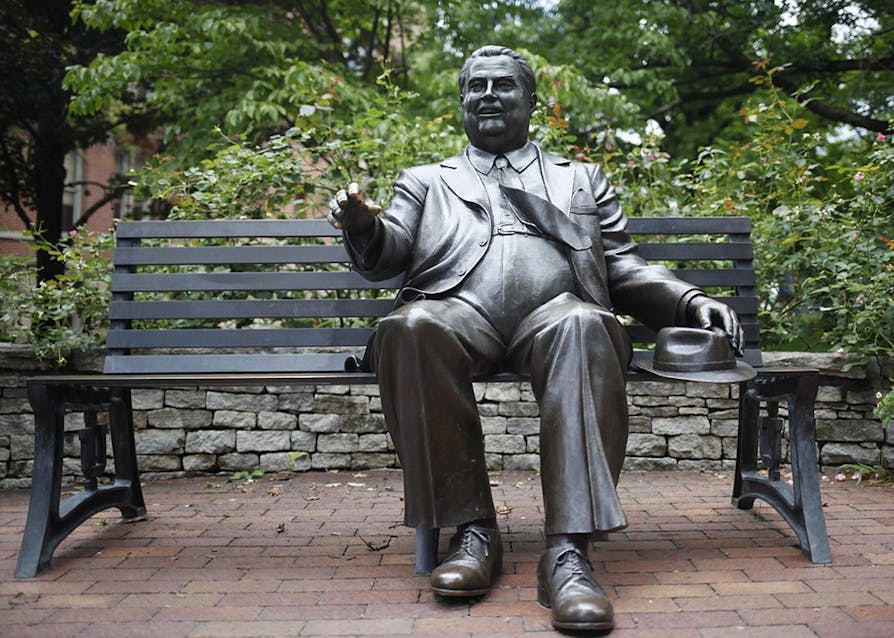
This statue, dedicated shortly after Wells’ death in 2000, serves as a reminder of IU’s connection to one of its most revered figures.
According to Robert Le Bien, chair of the committee who oversaw the sculpture, the statue is meant to convey Wells' open, “physical presence" on campus.
Approved by the Board of Trustees in 1998 and sculpted by IU-South Bend professor Harold “Tuck” Langland, who also created the Ernie Pyle statue by Franklin Hall, the statue portrays Wells sitting on a park bench, his jacket unbuttoned, his tie casually blown out of place by the wind and his hand outstretched.
It is a favorite tradition among Hoosier students to sit by Wells and shake his hand.
The cuff links on his jacket were cast from his own cuff links, and his left hand holds what was his favorite soft hat. Langland inscribed "IU vs Minnesota Oct 12 2000" on the underside of the brim of Wells' hat.
In the dedication program, Le Bien wrote that Langland portrays Wells as “relaxed but engaged, not lost in contemplation.”
"The sculpture portrays Wells not as bigger than life but as part of life. It shows Dr. Wells as we all knew him — as one of us.”
Sample Gates
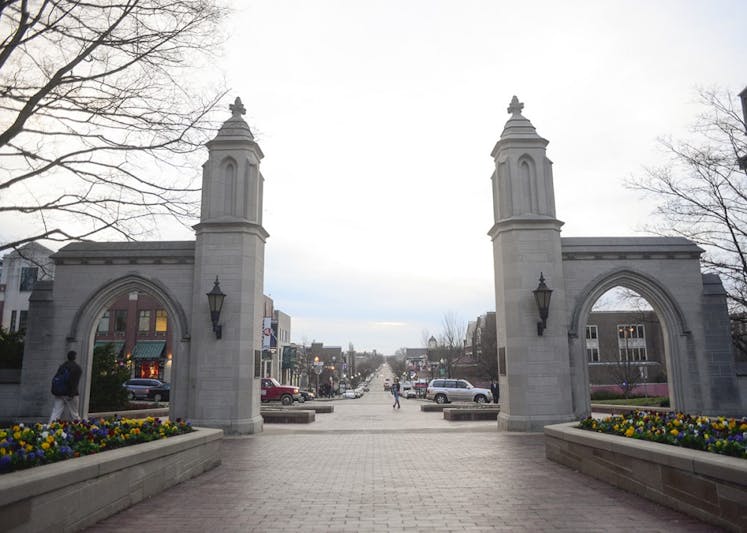
The Sample Gates have become one of the most recognizable spots on campus. Despite matching the look of the oldest part of campus where it resides, the gates' long road to construction finished only 30 years ago.
“It was only put up in the 1980s, which always surprises a lot of people, myself included,” said Carrie Schwier, an outreach and public service archivist at the IU Archives who co-authored the recent book, "Indiana University Bloomington: America’s Legacy Campus." “That architectural style fits so seamlessly into that section of campus that you think it’s been there for 100 years.”
The origins of a Sample Gates go back to the late 1890s when the graduating classes of 1899-1902 contributed to an “Arch Fund.”
According to Schwier, the gateway was originally meant to be an arch, and different architects submitted between eight to 12 alternate versions, which spanned many styles from modern to rococo. The archives still house those designs.
In 1967, the firm Eggers & Higgins submitted the design familiar to us today, a gateway made of Indiana limestone that blends with the surrounding buildings, according to Schwier.
However, students, staff and members of the community concerned about “wasteful alumni spending” shut the project down. It was not until the 1980s, when a gift from IU’s Director of Scholarships and Financial Aid, Edson Sample, provided the funds in honor of his parents that the construction finally took place on what we now call the Sample Gates.
Sundial
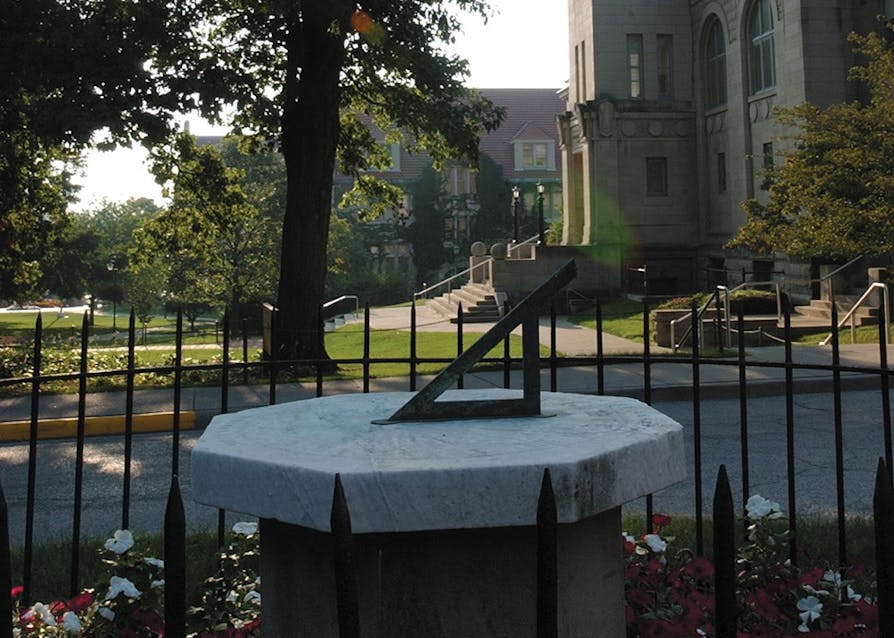
A remnant from the original IU campus at Seminary Square, the sundial, which now lies in the crescent between Maxwell Hall and the Student Building, was erected in 1868.
It was used to mark time according to where the sun was, according to Schwier.
It was moved to the Dunn’s Wood campus in 1896, 13 years after much of the Seminary Square campus burned down.
The sundial is famously where Mathilda and Otto Klopsch, both graduates of the class of 1896, met. They married in 1896, the year the sundial was finally moved.
In remembrance of where they first met, they were given permission by President William Lowe Bryan to spread their ashes on the Old Crescent timepiece. A plaque by the sundial reminds visitors where the couple began their romance.
The Space Between: Adam and Eve by Jean-Paul Darriau
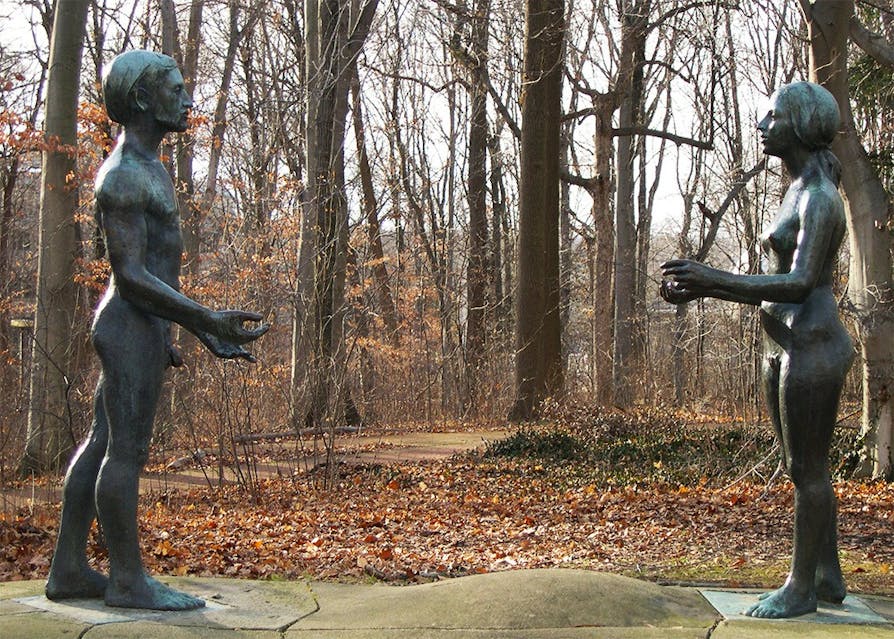
The Space Between by internationally recognized IU art professor Jean-Paul Darriau (1929-2006) is a bronze sculpture of nude Adam and Eve reaching out to each other resting on the eastern edge on Dunn’s Woods across from Kirkwood Hall.
Completed in 1968, legend has it that Darriau used his own children as models, according to "Indiana University Bloomington: America’s Legacy Campus."
Sherry Rouse, IU art curator, said Darriau wanted viewers to see them separately rather than together. The statues represent the differences between men and women, but show how they're drawn together by love.
Rouse also said the statues’ nudity was a source of controversy. At one point, someone even sawed off the penis, making Darriau craft a new one. As a joke, for decades now, IU students have dressed up Adam and Eve in the latest styles.
Hoagy Carmichael sculpture by Michael McAuley
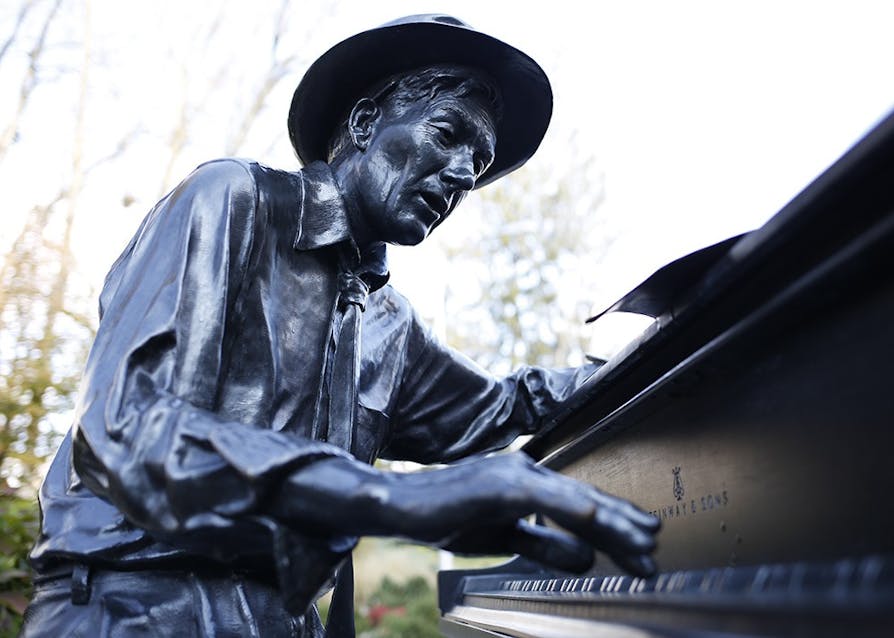
The statue of song writer and IU alumnus Hoagy Carmichael by Michael McAuley is situated outside the IU Cinema along the northeast side of the IU Auditorium.
Hoagy is portrayed at his grand piano, jacket tossed off, his left hand on a folder of past compositions and his right hand hovering about the keyboard, working on “Memphis in June,” according to McAuley’s own description.
McAuley unveiled his statue of Carmichael at the Indy Jazz Fest in Bloomington in 2007.
After obtaining his law degree from IU in 1926, Carmichael became a key figure in the American music scene. Among the Oscar winner’s notable compositions are “Georgia on my Mind,” “In the Cool, Cool, Cool of the Evening” and “Chimes of Indiana,” which was inspired by the ringing bells of IU’s student building, according to "Indiana University Bloomington: America’s Legacy Campus."
Ernie Pyle by Harold Langland
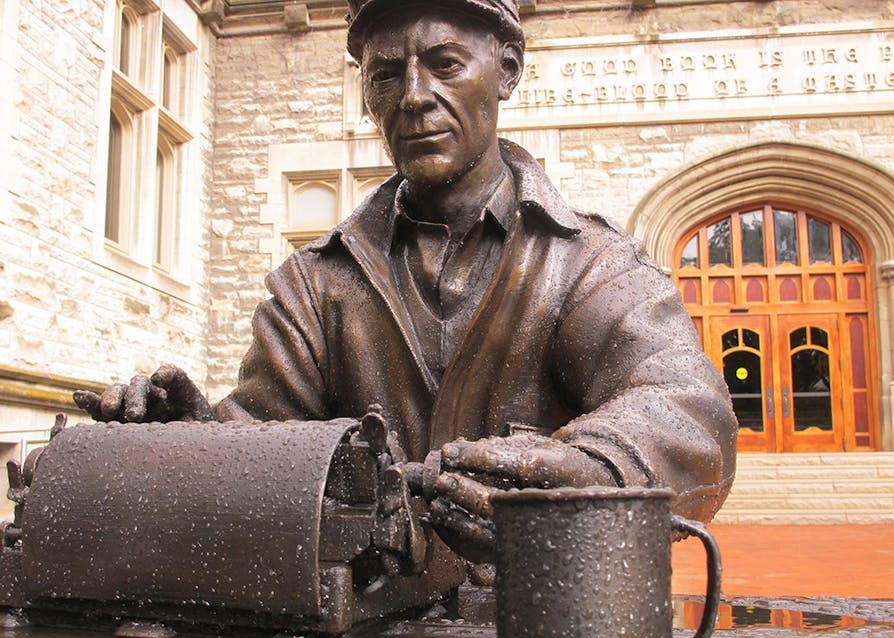
Harold "Tuck” Langland’s statue outside Franklin Hall of IU alumnus and noted World War II journalist Ernie Pyle was commissioned in 2013 for the inauguration of the Media School. It was dedicated the following year on homecoming weekend.
Langland, an IU-South Bend professor, portrayed a bronze, life-sized Pyle at his typewriter wearing a bomber jacket, helmet and goggles. A coffee cup is nearby.
According to "Indiana University Bloomington: America’s Legacy Campus," the statue is meant to “convey how Pyle worked alongside foot soldiers at the front during WW2.”
Just before finishing his degree, Pyle went to pursue a career in journalism, eventually becoming a war correspondent. He won a Pulitzer Prize for his first-person stories about infantry soldiers on World War II battlefields. He died when he was hit by machine gun fire during the Battle of Okinawa in Japan.
About Pyle, former President Harry Truman said that, “No man in this war has so well told the story of the American fighting man as American fighting men wanted it told,” according to "Indiana University Bloomington: America’s Legacy Campus."
Indiana Arc by Charles Perry
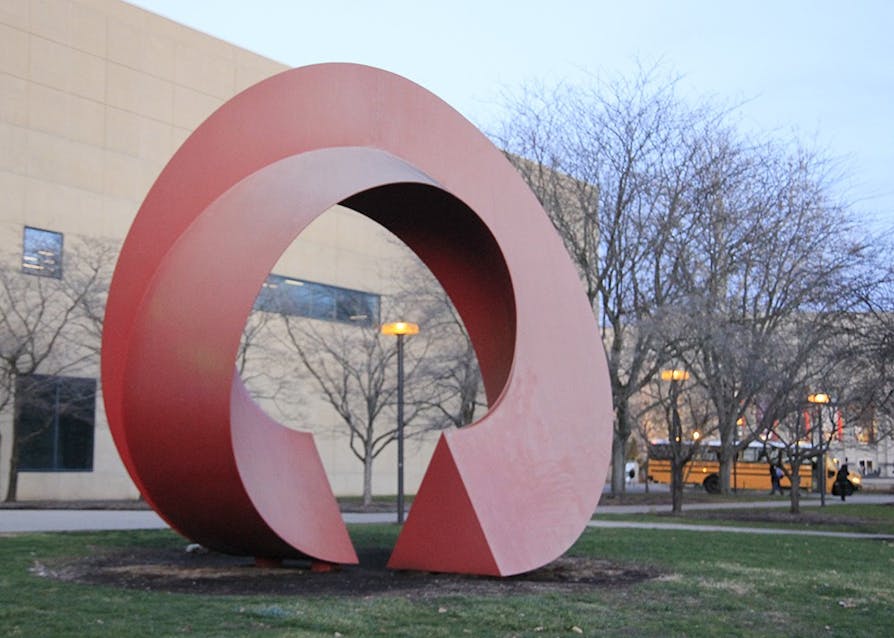
The giant, red 21-foot Indiana Arc, situated by the Sidney and Lois Eskenazi Museum of Art, was dedicated in 1995.
It was commissioned to stand aside architect I.M. Pei’s art museum and to honor the presidency of Thomas Ehrlich, according to "Indiana University Bloomington: America’s Legacy Campus."
Perry, whose work can be seen around the world including Singapore, Australia, Saudi Arabia and the National Air and Space Museum in Washington, D.C., got the job.
These are just a few of IU’s statues and their history. Schwier noted that many of the campus art work is homegrown, designed and sculpted by IU faculty.
“We have an amazing art department here,” Schwier said.
She said that public art is an integral part of the campus.
“I think it is intended to make the campus more appealing to those of us who inhabit it. It’s more homelike,” Schwier said. “I know there’s lots of educational theory out there about if where you are occupying is beautiful, it inspires creativity in your own work, in your research, and productivity, and that kind of thing.”

